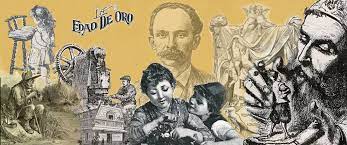Cuba owes much to Cintio Vitier’s teachings - whose birth centenary will be commemorated in 2021 - an outstanding and constant scholar of José Martí's essay and literary work, who always valued that the Maestro's most transcendent cultural legacy lay in his immense integrating vision.
In assessing his thought, he emphasized his humanism, which treasured essences, from which the beautiful and the aesthetic did not escape, and which matured from observing and delving deeper into objective and subjective reality.
This was the case during Martí's stay in Aztec lands (1875-1878), fruitful years, when he managed to express his concerns in the Mexican magazine Universal, and devoted considerable space to encouraging the formation of a national art and culture, with the imperative of a new literature, in which his own values would be specified and the intrinsic roots of the past would be delved into.
Above all, he emphasized the need for an identity of the people as an authentic expression of their rich culture, of their particular and at the same time universal nationality, of the autochthonous, of spiritual richness, of the usefulness of virtue.
It was not by chance that, at that time, when enjoying and evaluating one of the performances of José White, a well-known Cuban violinist, he said: “...Color has limits; words, lips; music, heaven. The true is that which does not end, and music is perpetually pulsating in space...”
Later, in another sublime moment of delight with the chords, he would recognize: “Music is the most beautiful form of the beauty”. And not only did he value music in this way, but he conferred the same hierarchy to other manifestations, where art and performers are presented “like two strong fighters who are linked body to body, and become fierce in the struggle...”, as Cintio Vitier acknowledged more than a century later.
There were no limits to Martí's appreciation of music and art in general. He paid special attention to the former, especially that which exalted the homeland.
In La Edad de Oro (The Golden Age), in plain and frank language, he left a text on “Los músicos, poetas y pintores” (Musicians, poets, and painters) which shows his admiration and wisdom, expressed in the form of a conversation on art and literature.
In his article on the exhibition of the Russian Vereschagin's paintings, he also expressed his most profound views on the subject. His concerns ranged from social commitment to the peculiarities of realism. He looked at Pushkin's verses and the transcendence of the paintings he analyzed, as recorded for posterity in the Collected Works of the man who has been considered the Apostle of Cuban Independence.
He saw in Vereschagin's canvases the imminence of the revolutionary outbreak in Russia. He emphasized that art “has to give true meaning to things” and called on creators to serve freedom, while stressing: “justice comes first, and then art. What does the artist live on, if not the feelings of the homeland?
But it was not only Cintio Vitier who admired this facet of Martí. Mirta Aguirre also recognized that he did not leave a unique and finished aesthetic legacy. Her specialized criticism in this field inaugurates a vital starting point for getting to know him through his publications in the press of the time, even in the United States.
In each article or commentary, he leaves for history theoretical notes that delve into the creative methods, the psychology of the characters and creators, as well as the value of the cognitive, ideological and artistic movements.
On the occasion of the commemoration on 19 May of the 126th anniversary of José Martí's death in combat, it is worth remembering that art represented for him a means and a radical way of transforming and enriching reality, and therefore a heritage of the people.
Bibliography: José Martí, “White”, Universal magazine, Obras Completas, Havana, volume V. Pg.293 and José Martí “La exhibición de pinturas del ruso Vereschagin”, OC, volume XV, pg. 229-238.


Deje un comentario